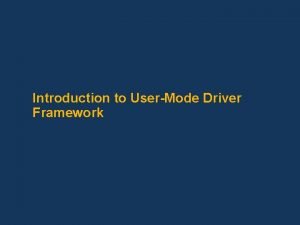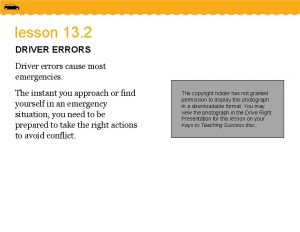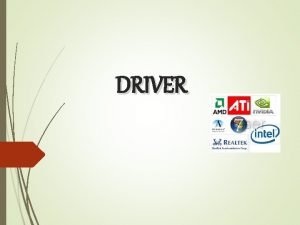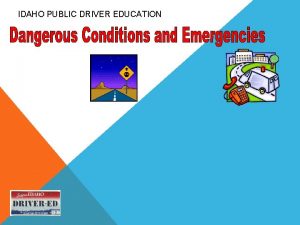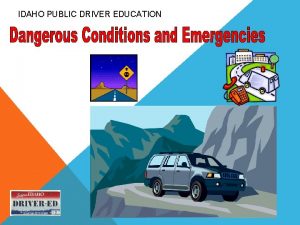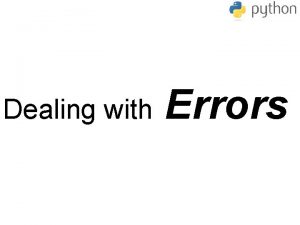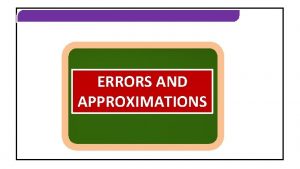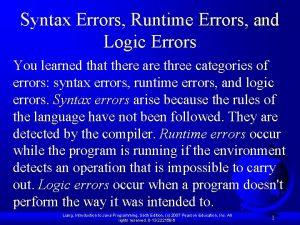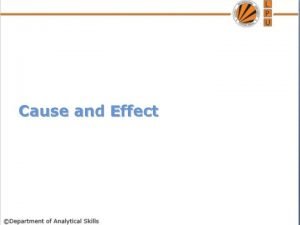lesson 13 2 DRIVER ERRORS Driver errors cause















- Slides: 15

lesson 13. 2 DRIVER ERRORS Driver errors cause most emergencies. The instant you approach or find yourself in an emergency situation, you need to be prepared to take the right actions to avoid conflict. The copyright holder has not granted permission to display this photograph in a downloadable format. You may view the photograph in the Drive Right Presentation for this lesson on your Keys to Teaching Success disc.

OBJECTIVE Explain how to get back on the road if four wheels are off the road.

Off-Road Recovery Your actions to recover from driving off the road depend on the number of wheels that are off the road and what’s ahead of you.

Four Wheels Off the Road Turning your steering wheel to jerk your car back on the road could cause your car to roll over.

This SUV has all four wheels off the road. The driver veered off the road. Do you know what the driver of the SUV should do to get back on the road?

OBJECTIVE List the steps necessary to return to the road when two wheels are off the road.

Two Wheels Off the Road Firmly position your hands at the 9: 00 and 3: 00 positions on your steering wheel. 1. Steer toward your target while keeping your car evenly positioned halfway on the road. 2. Slow down by letting up on the accelerator and braking gently if needed. 3. When speed has dropped to 10 mph or less, turn your steering wheel slightly (3– 5 inches) to the left. 4. When your right-front tire touches the edge of the road, get back on the road by turning your steering wheel to the right 3– 5 inches.

Off-Road and Obstruction Ahead Position your car so that it straddles the road drop-off. Do not reduce speed as you smoothly turn to the left. The instant your right-front tire contacts the edge of the road, turn to the right and focus all your attention on your target area.

The yellow car is approaching the intersection at 35 mph. Should the driver of the yellow car stop or swerve?

OBJECTIVE Explain when to use an emergency swerve.

Emergency Swerving The driver of the yellow car in this traffic scene has been driving too fast for traffic conditions and too close to the car ahead. He must swerve sharply.

When the object is farther away, swerve less sharply.

The swerve is less sharp at a greater distance.

Remember that at 40 mph or faster, you can swerve safely to the right in a shorter distance than you would need to brake to a stop. The faster a driver travels and the shorter the distance to an obstacle, the less time the driver will have to respond.

lesson 13. 2 review 1. When two wheels are off the road, why do you think it’s important to keep your hands at the 9: 00 and 3: 00 positions? 2. Why is it important to steer toward your target area if your wheels drop off the road?
 By and large what is the cause of intentional rating errors
By and large what is the cause of intentional rating errors Underlying cause and immediate cause
Underlying cause and immediate cause Proximate cause and ultimate cause
Proximate cause and ultimate cause Proximate causation vs ultimate causation
Proximate causation vs ultimate causation Imprinting biology examples
Imprinting biology examples Windows driver foundation - user-mode driver framework
Windows driver foundation - user-mode driver framework Teflessons
Teflessons Lesson outline lesson 3 describing circuits answers
Lesson outline lesson 3 describing circuits answers Kind of fault
Kind of fault Lesson outline lesson 2 aquatic ecosystems answer key
Lesson outline lesson 2 aquatic ecosystems answer key Micro teaching lesson plan example
Micro teaching lesson plan example Ihi l 101
Ihi l 101 Theme of a gift of chappals
Theme of a gift of chappals Chapter 1 lesson 1 your total health lesson 1 quiz answers
Chapter 1 lesson 1 your total health lesson 1 quiz answers Weather forecast lesson 3 outline answers
Weather forecast lesson 3 outline answers Sat vocabulary lesson and practice lesson 4
Sat vocabulary lesson and practice lesson 4





